Valvular Disease and Ventricular Function Analysis
-
Echocardiography is useful in detecting:
-
Valvular dysfunction
-
Ventricular dilatation/hypertrophy
-
Ventricular dysfunction -- wall motion anomalies; abnormally low ejection fraction
-
-
Large tricuspid valve vegetation (left); Left Atrial Myxoma (right) 
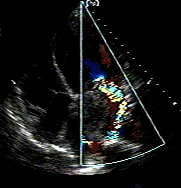
-
Large Left Ventricular Thrombus 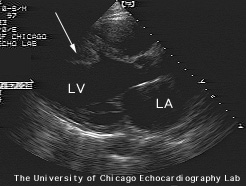
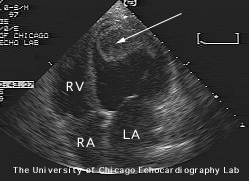
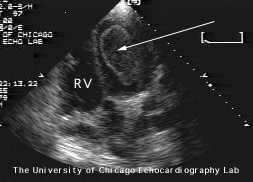
-
"Very large LV thrombus. Initially visible in the parasternal axes.
-
In the apical four chamber it occupies a substantial portion of the LV apex and when the transducer is angulated more inferior the enormous size of the thrombus is evident"
-
Courtesy of University of Chicago Echocardiography Laboratory
-
-
Radionuclide Angiocardiography
-
Pulmonary vascular anomalies, such as pulmonary emboli
-
Rationale for imaging to detect pulmonary emboli
-
Pulmonary emboli common (25-50,000 deaths per year; 25 percent autopsy incidence)
-
Most reliable signs: sudden dyspnea/hypoxemia [less reliable signs: sub-sternal pressure; hemoptysis; pleuritic pain]
-
Pulmonary emboli: maybe lethal, but treatable
-
Imaging techniques confirm clinical sign and screen high-risk patients
-
Diagnostic methodology:
-
Nuclear medicine (isotope tagging) Ventilation/Perfusion Scan (V/Q)
-
Based on IV injection of isotope-tagged microspheres, which "embolize" an insignificant number of capillaries-- as a result "MAP PERFUSION"
-
Ventilation images are obtained by patient inhalation of radioactive Xe 133
-
Ventilation images & perfusion images are then compared
-
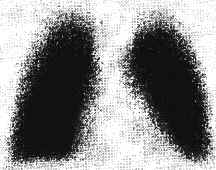
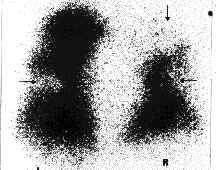
-
Normal pulmonary ventilation (left), is corresponding abnormal perfusion image (right).
-
The presence of several large focal perfusion defects not managed by ventilation defects indicates a high probability of pulmonary embolism.
-
Images courtesy of Creighton University School of Medicine, Special Pulmonary Imaging
-
-
-
-
-
Electron Beam Tomography
-
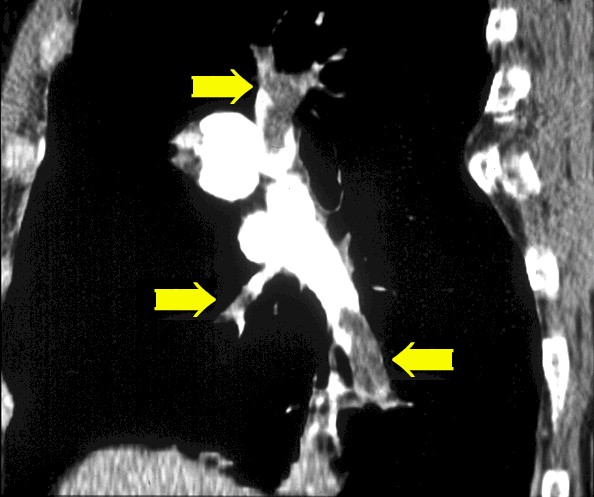
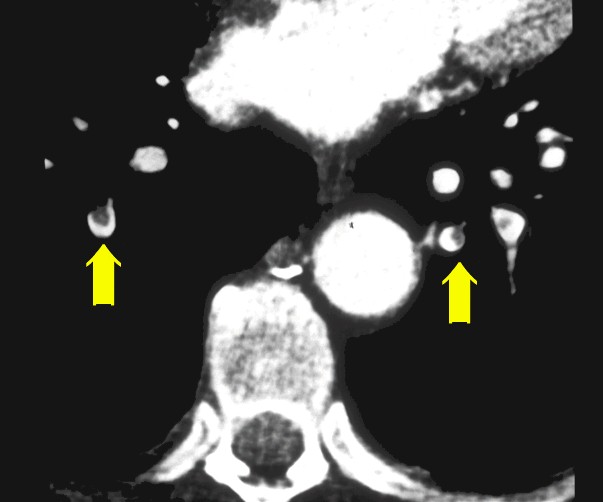
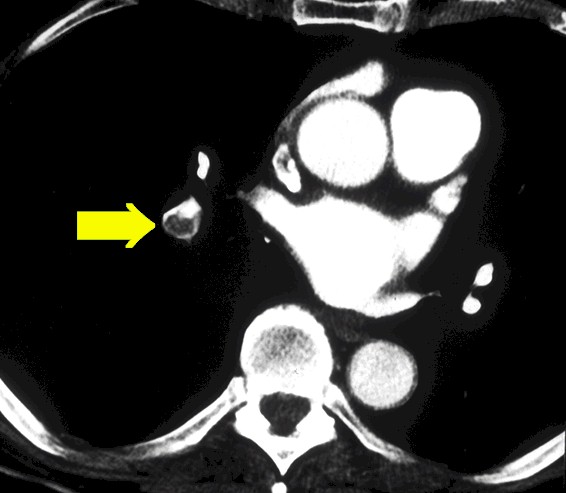
-
Electron beam capture tomography and visualization of pulmonary emboli (yellow arrows)-and images courtesy of Dr. Patrick Sheedy, Mayo Clinic, MN
-
-
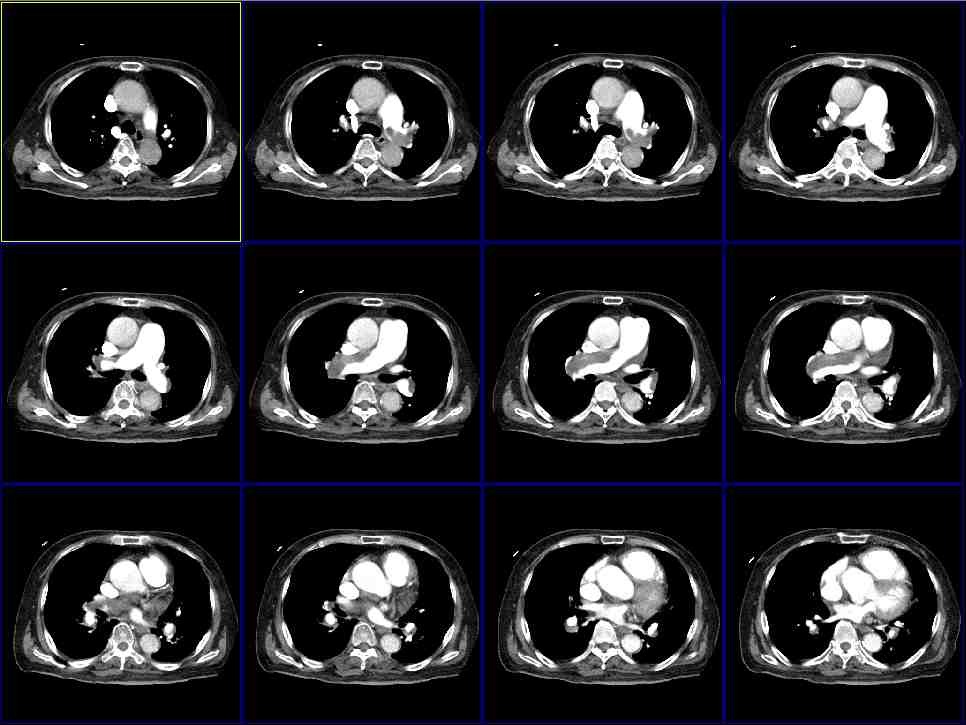
-
Electron Beam Tomography: Pulmonary Emboli -- images courtesy of Imatron
-
-
-
Primary Reference: Ross, AF, Gomez, MN. and Tinker, JH Anesthesia for Adult Cardiac Procedures in Principles and Practice of Anesthesiology (Longnecker, D.E., Tinker, J.H. Morgan, Jr., G. E., eds) Mosby, St. Louis, Mo., pp. 1659-1698, 1998.
-
Primary Reference: Shanewise, JS and Hug, Jr., CC, Anesthesia for Adult Cardiac Surgery, in Anesthesia, 5th edition, vol 2, (Miller, R.D, editor; consulting editors, Cucchiara, RF, Miller, Jr.,ED, Reves, JG, Roizen, MF and Savarese, JJ) Churchill Livingston, a Division of Harcourt Brace & Company, Philadelphia, pp. 1753-1799, 2000.
-
Primary Reference: Wray Roth, DL, Rothstein, P and Thomas, SJ Anesthesia for Cardiac Surgery, in Clinical Anesthesia, third edition (Barash, PG, Cullen, BF, Stoelting, R.K, eds), Lippincott-Raven Publishers, Philadelphia, pp. 835-865, 1997.